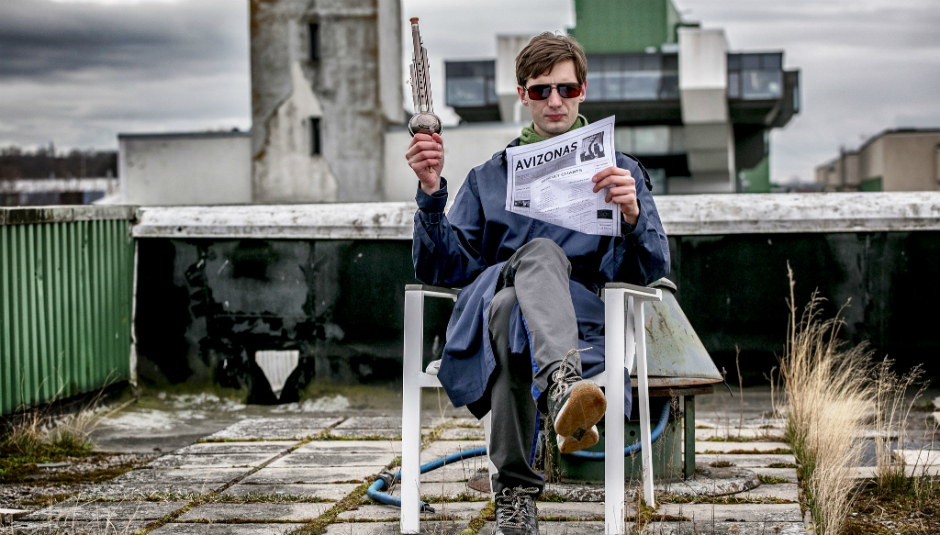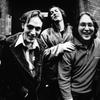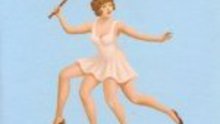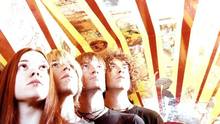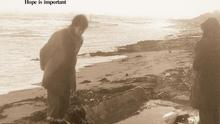Estonian pop maverick Mart Avi is the embodiment of an enigma, creating a singular and complex artistic language that confounds the past and present, the familiar and the unknown. On stage at Tallinn Music Week, during my first real encounter with his otherness, Avi created a high-art confrontation at odds with the audience and the space. With a bizarre interpretation of the pop sound and cut-up, strange visuals it was a guess-who game of influences, ideas and inspirations. From his artistic output his ‘story’ makes little sense, what exactly is Mart Avi?
We know that his enigmatic approach has caused a stir in his native land with all three of his albums, culminating in 2016’s Rogue Wave, topping annual critics’ lists and the last album also grabbing Best Electronic Album at the Estonian Music Awards. In 2017, he was awarded the artist prize of Tallinn Music Week. With Avi heading to UK shores for Liverpool Sound City this week, I approached the Estonian oddball to try and get some answers. The resulting correspondence raised as many questions as it answered, and cemented Avi as a truly unique character.
Avi is an artist that revels in the creation of his own mythology – there are blurred lines between the truth and his artistic creation. Much like the classic narratives created around Factory records or Kurt Cobain’s telling of his past, it could all be true, or all be false, but it makes little difference. Mart Avi has a unique tale to share.
His ‘origin story’ came ready forged for a career of subverting art running parallel with the birth of modern Estonia. Growing up in what was left of a Soviet collective farm in the 1990s and born just one month after independence was gained, he was a child of freedom, living with the aftershocks of Soviet austerity. In his whimsical, yet strange telling of his childhood you can already envisage where his world came from.
“A lot of it was spent in strolling around half-functional or recently abandoned kolkhoz structures (full of animal bones and rusty contraptions) and nearby forests. Building cabins, assembling bombs, making fires and many other Tom Sawyer-esque activities. The freedom was total. Me and my friends - we did a lot of questionable things and caused some havoc and destruction on the way, but I don’t think we ever actually harmed anyone. It didn’t root in anger, but discovery and curiosity. It was a bit like Stranger Things. We even published a hand-written zine on local anomalies and played our own DIY version of D&D,” explains Avi.
“The telly had three channels, which mostly recycled 80s American sitcoms, Latin soaps, and Bonanza; everything else was static. I was more into radio (national broadcasting). I remember hearing ‘Theme From A Summer Place’ a lot. So, I was living “out of time” which step-by-step started to merge with the contemporary culture as those boxy soviet vehicles slowly started to disappear from the roads. I’m sure that those who grew up in Tallinn at the time would give you a different story. I was born in 1991, but it’s as if I come from the 50s. I even have those scars on my left shoulder from the smallpox vaccine that got banned worldwide in the early 70s. I guess the local veterinary who injected it still had some supplies left. They still itch time to time, but I’m glad. It is, what it is.”
These formative years don’t seem like an obvious route into pop music. But as Estonia pushed forward with enthusiasm to create its own future destiny through art and technology, the young Avi latched onto this taking what he needed from the explosion of ideas and the openness of that time. A collision of traditional media and the new, created a forward-thinking outlook that also revelled in the past.
“Everything started from the press. The coverage of (western) popular music in Estonian newspapers was at a fine level. Really, I was about as enthusiastic about print media as I was about Lego and that says a lot (or to be honest, I think I even preferred the catalogues to the real thing). I just strived for interesting data. At the age of five, some of my stories about ‘weird fantasy animals’ were published in the biggest Estonian weekly. It’s not like my parents made me do it. I was dissatisfied with some of the content in the ‘Kid’s Corner’ and decided that I could do better,” explains Avi of his first forays into media and art.
“Later, the coolest magazines in the city library seemed to be about music (all British) and they didn’t have those in the village library so that seemed intriguing,” he adds. “Meanwhile, I was getting more selective on what I was listening from the radio. I also installed the Estonian-invented piracy nest Kazaa (a popular peer-to-peer file sharing application at the time) to my dad’s accountant's PC. So, I was secretly downloading some of the music I was reading about from the zines (although, often the photos had the greatest impact). My educators were sharp pop-culture selectas (in the field of free media). No algorithm can replace that yet. I wish Spotify would show me recommendations of artists I’d hate to listen to.”
At the age of 16 Avi’s world was transformed when he moved to Luxembourg, giving him a much larger access to both recorded music and people who were fans. From this change, he met countryman Paul Sild and they formed artpop/indie group Badass Yuki in 2008, which has released two critically acclaimed albums. No doubt this provided the confidence and understanding of the craft that we witness with Avi as a solo artist.
Everything about his musical start comes from his own ambitions and ideas, with him never formally learning how to play an instrument. He started with the guitar before delving into electronic sound, which in his current persona is supplemented by voice and samples. A decade after his indie band beginnings he is a complete artist entity doing things his own way. Journalistically, he is an artist that makes writing hard. His sound, his image, and his ideas are difficult to pin down and explain to the uninitiated (and even the people who have witnessed him).
A “wise friend” of his said he “makes aftershock music for trans-humanist wavelengths”. Even the official explanations need an explanation when it comes to Avi.
“The wise friend who wrote that said that it can be interpreted as the pathological anxiety that still lingers and makes us stake in dysfunctional sounds and visions even though the Great Pop Era has ended. I’m a fan of this idea”, says Avi.
“Or it could be a whimsical way to say that the man or his music has a certain perception, where things come and where things are going on the horizon. The age of the rock star, like the age of the cowboy, has passed. Nowadays, if you turn up the radio, you’ll hear songs about the feeling of it like it’s some sort of cotton candy you can buy from the amusement park or a Halloween costume (and you can party like one!). What a bore. It’s time to let go of this idea and recontextualise it.”
In this recontextualization, Avi describes his music as “Madcap lounge beat, transfigured.” Certainly, latest album Rogue Wave has a strange, lounge music vibe with crooning but fraught vocals and the inner reflection of Bowie’s death-knell material. It’s encyclopaedic pop-culture reference material that sounds complete but fractured. ‘Bedroom Bowie’ if you will – but how much of an influence did the Thin White Duke have on Avi?
“Me and Bowie, we go way back. Even at the time of his grand exile, I never thought of him as a sort of unreachable mythical figure sitting in a pantheon far, far away. I thought of him like one thinks of a good friend, a kindred spirit, not a father figure. It might sound silly, but I truly believed that I was probably going to have drink with him when I get older. I was glad when he came back (The Next Day) and at that time I had just released my first solo LP. So finally, we were releasing music on the very same timeline. Till he left (Blackstar). I’m truly happy for that shared experience, that I got to witness that. On that day, the world became a lonelier place for me and I lost a bit of that child in me. That feeling manifested itself in some of the songs that I was recording at the time, such as ‘End of an Era’ and ‘Seasons Have Changed’.”
Much like his inspiration, the music Avi makes sounds not quite of this world. This is something that the new forthcoming follow-up record actively acknowledges and subverts. In asking a simple question about what to expect from the new record, the answer turns into something philosophical.
Avi explained, “The next album is in fact called OtherWorld. This question has the potential of being infinite. For example, yesterday was the warmest day of this spring so I decided to take a little walk in the city but ended up taking a train to a random small town instead. In such cases I usually run a test - what would it be like to live here? I analyse the environment, check the infrastructure, check the bulletin boards, do groceries etc. One of the shops over there had really great pies! And when I get back its as if I’ve lived a slice of a different life and my brain’s revitalized. Sure, it doesn’t necessarily mean that I’m going to write a song about ‘The Great Day Trip’, but it definitely enchants me in a certain way.”
While his recorded output evokes all sorts of ideas, in his live persona Avi puts forward a challenging but complete image that turns the idea of live performance on its head. The centre of this show is his own Avi Networks, a visual display that uses analogue ideas in the digital language of today.
“‘Avi Networks’ is a simple, image-based offline data-bank that I can regularly update. It’s a visual undercurrent of what I’m into at the time. I guess it’s similar to what many are doing in social media. People are used to a flow of images flickering by. If I’d have an Instagram/Snapchat account, I’d probably show its feed to the audience, but I have Avi Networks instead. No offence to the programmers of aforementioned apps, but I prefer my own invention, which is more intuitive and visually pleasing for me to use.”
His ’own invention’ is thrust forth at the expense of the audience, at times the whole affair seems voyeuristic as if not intended for the audience present in the room. What does Avi want from an audience and what does he want them to take from his performances?
“They can take everything they can. I’m in a void out there. I don’t even see any faces. It’s as if there truly is a blind wall and the audience is part of the smokescreen. I do find it enjoyable though. It’s rarely a dead zone, more like a nuclear-reactor-buzzin’-electricity-kind-of-void, rather lively. Once in Russia, youngsters were stage diving during my set. That was fun too. Reminded me of an Estonian smoke sauna, all those fumes blowing through!”
This ‘void’ is being brought to the UK at Liverpool Sound City, and how audiences in the UK respond to this alien web of ideas remains to be seen. Despite Avi’s fascination with the British music scene of old, his real-world experiences of this green and pleasant land have been minimal, but in true Avi fashion, utterly surreal.
“I’ve only been to London. Did a different kind of show there once in my teens. Slept in a nine-bed dorm, ate only bananas for five days and used all of the £800 I had saved during the summer to buy a hefty load of records. Also met some wonderful people during a senior northern soul all-nighter at Club 100. Really looking forward to Liverpool and I’ll also make sure that I get to Manchester. Those locations are so thick of pop-cultural texture. Is it going to feel like walking into a museum?”
As the curator of his own living pop culture museum it's hard not to see him intriguing British audiences looking for something different. Before another question can be raised Avi relays another tale of touring strangeness.
“Last summer I performed at Kalana Saund, which takes place on a small island off the west coast of Estonia. So, at first, as a fan of aviation, I took a small Jetstream twin-turboprop airliner to get to the island and then I was voluntarily put into a little sailboat to get to the right peninsula in eight hours. Others took a bus of course (I don’t like buses...). The weather turned, waves started hitting the deck, eight turned into 10 hours and I got terribly seasick. So, I was a total mess when I finally landed. I basically had to put myself and my intestines back together again with a great deal of help from the organisers. The gig went well.”
From our conversation, I am no closer to truly understanding the world of Mart Avi, but I guess that’s the point. Pop music as myth, wrapped in an enigma. To end the question had to be asked – who is Mart Avi and what should I understand about his image?
“I don’t talk about my image, I portray it. I come from the land where stars make dreams and dreams make stars.”
It doesn’t answer the question, or even make sense. But that’s the point of this artist, to be the question with no answer.
Mart Avi plays Liverpool Sound City this Sunday, 6 May. For more information about him, please visit his Bandcamp page.
Photo Credit: Evert Palmets

